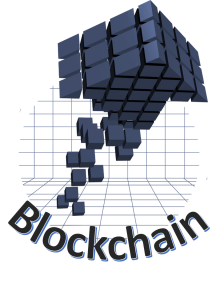Karen DeYoung writing in the Washington Post discusses how the intelligence community has changed in the five years since 9/11 in its fight to stop terrorism [“A Fight Against Terrorism — and Disorganization,” 9 August 2006]. It was the very disorganization to which DeYoung refers that started me down the path to establishing Enterra Solutions. Connecting-the-dots and turning data into actionable intelligence is difficult, as DeYoung notes in her opening sentences:
Early this summer, a new strategy for combating terrorism, described by its authors as “revolutionary” in concept, arrived on President Bush’s desk. The highly classified National Implementation Plan for the first time set government-wide goals and assigned responsibility for achieving them to specific departments and agencies. Written by officials at the National Counterterrorism Center, under a directive signed by the president last winter, the 160-page plan aspires to achieve what has eluded the Bush administration in the five years since the Sept. 11, 2001, attacks: bringing order and direction to the fight against terrorism.
Achieving this lofty goal is not a matter of spending more money. DeYoung notes that billions of dollars have been spent during the past five years on counter-terrorism operations. She also reports that in spite of the much touted reorganization of the Intelligence Community it remains “immense and unwieldy.” A whole new group of alphabet soup groups have joined the myriad of intelligence organizations that were already in place.
Institutions historically charged with protecting the nation have produced a new generation of bureaucratic offspring — the Pentagon’s Counterintelligence Field Activity (CIFA) and Joint Intelligence Task Force for Combating Terrorism (JITF-CT), the Treasury Department’s Office of Intelligence and Analysis (OIA), and the FBI’s National Security Service (NSS), to name a few — many with seemingly overlapping missions.
The unwelcome result has been a delay in information sharing rather than a ceasefire in turf wars that have traditionally plagued competing intelligence organizations. In fact, new turf battles have probably arisen.
The ad hoc construction, adding layer upon layer with none taken away, has left intelligence and security agencies competing for turf. Deadlines for priorities have been missed. DHS, for example, has repeatedly delayed supplying a congressionally mandated list of the nation’s critical infrastructure, and a blueprint for information-sharing among federal, state and local entities has been slow to get off the ground. Continuity and coherence have been undercut by rapid turnover among top officials, particularly in the institutions responsible for domestic security and preparedness.
The article goes on to note that “the man in charge of much of the counterterrorism effort is Director of National Intelligence John D. Negroponte.”
His office was created last year under the 2004 Intelligence Reform and Terrorism Prevention Act to fix two widely acknowledged problems. The first was the intelligence community’s pre-9/11 failure to collect and share information that might have warned of the al-Qaeda attacks. The second problem was the confusion and competition spawned by post-9/11 attempts to fix the first. Negroponte supervises the 16 agencies that make up the federal intelligence community and is the president’s chief intelligence adviser. Directly under him, the National Counterterrorism Center (NCTC) is the central repository for terrorism information collected throughout the community. Its several hundred analysts integrate intelligence, figure out what it means and redistribute it across the government. The center’s strategic planning division provides what NCTC Director John Scott Redd has called “the missing piece” between White House policy decisions and the operational departments and agencies that carry them out.
Despite the seemingly tortoise-like pace that progress in information sharing is making, I know from personal experience that members of Negroponte’s staff are working hard at solving both the technical difficulties and cultural challenges that confront them. Among the cultural challenges DeYoung mentions is the Pentagon’s hesitance to share its information with other government organizations.
When the level of animosity peaked last summer, Rumsfeld and then-CIA Director Porter J. Goss were prodded by Michael V. Hayden, then deputy director of national intelligence, to negotiate an agreement to delineate intelligence-gathering responsibilities. Under a separate memorandum of understanding, the Pentagon and the State Department agreed that ambassadors would be informed of all military activity in their countries and given the opportunity to object.
The problem, as the article points out, is that many intelligence targets do not fall under the purview of the military. The recent arrests in London are a perfect example. The article notes that U.S. military power must be balanced by other considerations.
New initiatives such as the National Implementation Plan were launched to eliminate overlap and set priorities for what the administration now calls the “long war.” Beyond drawing sharper lines of responsibility, officials said, the plan is designed to drag the nation’s counterterrorism strategy back from military dominance, better balancing the military “whack” with diplomacy and the “hearts and minds” campaigns that are now seen as critical to long-term victory.
The original intelligence turf battles between military agencies and everybody else were fought over two things: who could provide the right kind of intelligence at the right time to the right people and money. Aligning those two objectives have continued to mark the battles ever since.
Eventually, officials acknowledged, it will also require a reconfiguration of the intelligence budget, now heavily weighted toward the military. No one expects that to happen overnight — early proposals to shift spending brought a sharp protest from Rumsfeld.
The war on terrorism requires both efficiency and effectiveness. The article notes that 16 separate intelligence organizations offered assessments of the terrorist risks prior the Olympic Games in Turin. That kind of duplication is neither efficient nor effective.
Avoiding such duplication and wasted effort, [a senior counterterrorism official] said, “was the whole point” of setting up the NCTC as the sole provider of integrated intelligence analysis. Yet neither congressional mandates nor presidential directives have been enough to eliminate the overlap.
The article notes that the tensions and redundancies currently found in the intelligence community can be traced all the way back to the beginnings of the Cold War.
The Sept. 11 commission found that long-standing tensions within and among the CIA, the FBI and the rest of the community, along with institutional firewalls constructed during the Cold War, meant that “information was not shared” and “analysis was not pooled” that might have warned of the attacks on the Pentagon and World Trade Center.
The DNI and the NCTC now have responsibilities for integrating and analyzing all-source intelligence, but the article emphasizes that they don’t have the resources to compete with others who still dream of seizing the throne.
The DNI-NCTC structure remains vastly outweighed in power, personnel and tradition by the growing bureaucracies it hopes to tame. While the number of NCTC analysts is scheduled to double to 400 by 2008, the FBI alone has tripled its analytic staff since 2001 to more than 2,700. The DIA has nearly 8,000 employees collecting and analyzing intelligence, and the CIA has twice that many.
Accurate, actionable analysis is the crowning achievement for those involved in intelligence and ceding that responsibility to the DNI and the NCTC is, for many agencies, like being asked to sacrifice their first-born son. Any good analyst is skeptical that others can see the future as clearly as they can.
Many see themselves as demoted to mere intelligence-gatherers, stripped of their rightful roles as strategic analysts and forward-looking policy advisers. An internal CIA study, declassified last month a year after it was written, criticized the NCTC model as promoting “watered-down analysis, duplication, confusion, and misuse of scarce resources.” Separating those who collect intelligence from those who analyze it would result in a weaker product, the study said, and was likely to lead to more strategic failures like those in Iraq. The addition of new non-operational layers to integrate, analyze and share information “has made the organizational picture more, not less, confusing,” Paul R. Pillar, a former national intelligence officer for the Middle East and South Asia, said recently. The question of “who’s in charge of intelligence, when it comes to counterterrorism, is harder to answer now than it was before.”
The article details the daily face-to-face (or video-to-video) meetings held thrice daily to share information. Obviously, such information sharing reaches a limited number of people. Even within the broader intelligence community, shared information reaches a relative few users.
Most desks are stacked high with half a dozen or more computer processing units connected to various intelligence agencies that still cannot, or will not, communicate with one another electronically. Negroponte deputy Dale Meyerrose, a retired Air Force major general and expert in creating and integrating communications systems architecture, is charged with breaking down the technological barriers among what he calls intelligence “tribes” with a built-in reluctance to divulge their secrets. Meyerrose, a recent addition to the DNI’s office, does not dispute or defend the slow pace of information-sharing. “My government’s had five years,” he acknowledged in a recent interview behind a code-locked door inside the high-security DNI headquarters at Bolling Air Force Base. “I’m very sympathetic to that. But you know what? I’ve had four months, and there’s nothing I can do about the 4 1/2 years that went before me.” Technology is important, but “it’s the transparency of the process that people are griping about,” Meyerrose said. Feuding intelligence agencies don’t argue about a lack of computer interface, he said, they talk in terms of “The FBI wouldn’t tell me this.” Rather than imposing new computer systems from the top down, he has started from the human end, bringing representatives from different agencies to the same table to work on specific intelligence issues. The NCTC operates on the same principle of “co-location,” fashioned under the 2004 intelligence reforms, that pulled the branches of the armed forces into a combined structure designed to end decades of destructive and expensive rivalry.
Eventually, if Meyerrose is successful, technology will matter and information sharing across numerous agencies will require an architecture capable of meeting emerging demands of who needs to know what and how they can best get it. Only automated rules embedded in a Resilient Technology Architecture will be able to meet these demands. The sooner such an architecture is put in place the sooner analysts across the various agencies will understand that their individual contributions become more, not less, valuable. Negroponte and his staff are working hard to make this a reality and I believe the right people are now in place to progress at a much faster pace.




